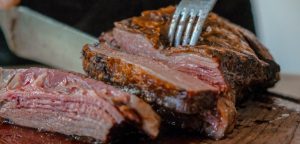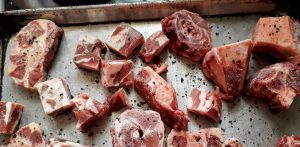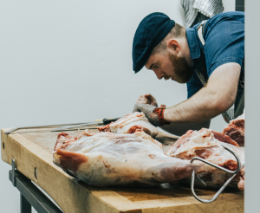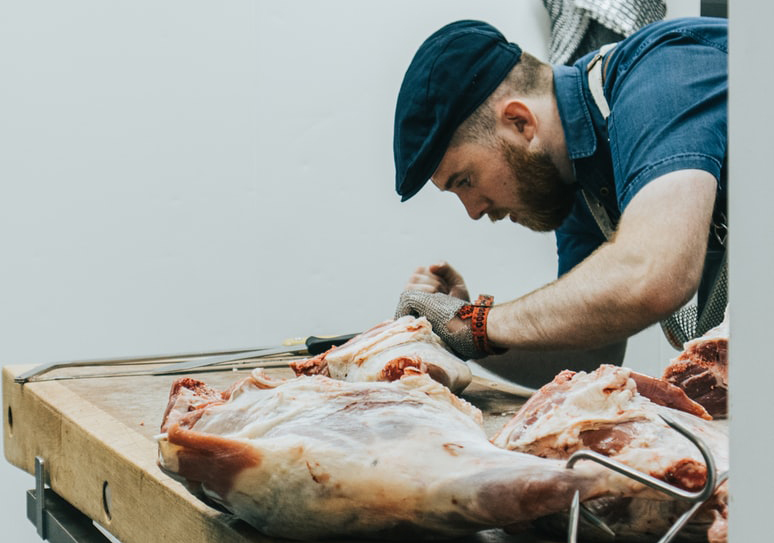Food waste is a huge issue.
In the UK, around 9.5 million tonnes of food are wasted each year according to WRAP – the charity behind the Love Food Hate Waste campaign. And food waste doesn’t just happen at home, it’s not just about stale bread and unused vegetables at the bottom of the drawer – although there’s a lot we can do here. A large proportion of food waste happens before the food even reaches the shelves.
If like us, you’re becoming increasingly mindful of the meat you eat, in terms of the quality and the quantity you consume, reducing food waste, and eating more sustainably, then you’ll be keen to know more about Nose to Tail butchery.
What is Nose to Tail butchery?
A fairly self-explanatory term – it refers to the use of every part of an animal carcass, with nothing going to waste.
Often referred to as “The Fifth Quarter”, nose to tail butchery means using parts of the animal beyond the more standard cuts. So, offal such as liver, heart, kidney, lungs and intestines. Drawing off blood for black pudding, or fats to use for cooking or producing things like soap. And then trotters, head, ears, bones, tails and hooves, for boiling up stocks and broths, drawing out rich sources of nutrients.
Nose to tail eating – it’s certainly nothing new.
Early humans ate the whole animal because it provided them with a range of nutrients, and there was scarce food to waste. And animals do the same. In many Eastern and Middle Eastern cultures, these parts of the animal are revered and eaten as treats and delicacies.
But in the UK, it reflects a more traditional style of diet. Back in the 1950s when little meat was available, butchers regularly sold off more of the carcass to preserve stocks. If an animal was slaughtered at the beginning of the week, then offal, sausages and stewing meat were sold first (as they wouldn’t last as long), and roasting cuts would be kept to sell at the end of the week – ready for the Sunday roast.
However, as families began to be able to afford more of the expensive cuts, and meat became more widely available once again, offal declined in popularity, with some of the most delicious and nutritious parts of the animal being devalued and seen as “cheap meat”.


Tastes and food trends have changed the way we eat meat significantly over the last 75 years.
And now with an ever-increasing focus on eating less meat – that’s of better quality and good for our bodies and good for the planet – a move to a more sustainable way of butchery is slowly returning. And it’s something we’re focused on here at Douglas Willis to try to improve.
Why is it important?
Sustainable meat farming often focuses on the use of the land, welfare of the animals or the impact of methane gases, but by reducing the amount of the carcass that is wasted we can also make an impact.
When less goes to waste it means the energy that has gone into rearing the animal isn’t wasted either. And of course, it’s more economically friendly too – as offal cuts are often less expensive for the customer and the farmer can profit from more of the animal.
Instead of bones and offal being seen as a by-product of the meat industry they are once again starting to become a valued part of our diet. Reducing waste and offering a more conscious way to consume meat.


So, what can you do to help?
You can easily start with some small changes and although some of these meats might be less common on our plates, they’re certainly no less tasty. Plus, they’re packed full of more nutrients to help you include meat as a healthy part of your diet.
Try:
- The subtle flavour of Ox kidneys in a delicious homemade steak and kidney pie.
- Slow-cooked Beef or Ox Cheek in a rich beef bourguignon, or Oxtail for melt in the mouth beef stew.
- A traditional, affordable family-favourite, our faggots are made with Ox Liver.
- Soft Lamb’s liver is packed full of vitamins and minerals and served with bacon, onions, and creamy mash.
- A nutritious, flavour dense broth made with roasted beef bones, simmered for several hours.
- A charcuterie platter with terrines, pates, and cured, sliced meats like ox tongue.
- Or simply ask, and we’ll happily prepare a delicious, sustainable cut for you to try.





